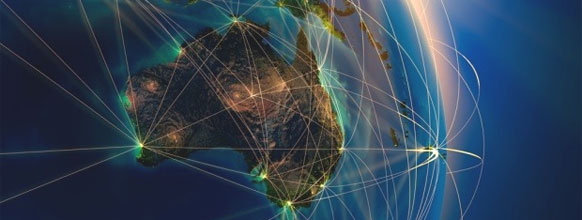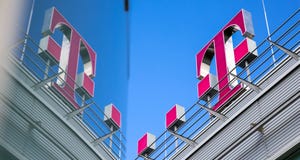TPG boosts 5G spectrum assets with Dense Air deal
TPG Telecom has been on a 5G spectrum shopping spree of late and has just augmented its stock of 3.6GHz frequencies in six cities through a swap with Dense Air.
August 2, 2021

By Anne Morris
TPG Telecom has been on a 5G spectrum shopping spree of late and has just augmented its stock of 3.6GHz frequencies in six cities through a swap with Dense Air.
TPG Telecom has boosted its supply of 5G frequencies in the all-important 3.6GH band after it reached an agreement with Dense Air, a small cells neutral host.
The Australian operator said it is buying all shares in a Dense Air subsidiary that owns 3.6GHz frequencies acquired during the country’s 2018 auction. The transaction will increase TPG’s 3.6GHz spectrum holdings in six cities, Adelaide, Brisbane, Canberra, Melbourne, Perth, and Sydney, supporting its mission to reach 85% population coverage in these cities by the end of this year.
At the same time, TPG is selling 2.6GHz licences to Dense Air Networks Australia under a separate agreement. The operator noted that Dense Air’s 3.6GHz spectrum is a better complement to its existing spectrum portfolio, “while the 2.6GHz offers Dense Air national spectrum which, along with Dense Air’s 26GHz spectrum, better enables Dense Air’s neutral host model.”
Both agreements must be completed concurrently and are subject to regulatory approval by the Australian Competition and Consumer Commission. The two transactions are expected to complete in September 2021, although no financial details have been revealed.
TPG increases 3.6GH spectrum assets
City | Additional amount acquired | Current 3.6 GHz holdings | Total after acquisition |
|---|---|---|---|
Adelaide | 30 MHz | 60 MHz | 90 MHz |
Brisbane | 35 MHz | 60 MHz | 95 MHz |
Canberra | 35 MHz | 60 MHz | 95 MHz |
Melbourne | 5 MHz | 60 MHz | 65 MHz |
Perth | 35 MHz | 60 MHz | 95 MHz |
Sydney | 5 MHz | 60 MHz | 65 MHz |
Iñaki Berroeta, the CEO of TPG, said the additional mid-band 5G spectrum “will mean a significant boost in speeds through increased capacity”.
“This spectrum acquisition will enhance our 5G customer experience and set us up for future customer growth as we roll out our 5G home internet service to meet customer demand for NBN alternatives,” Berroeta said. TPG began rolling out fixed wireless access (FWA) services based on its 5G network from June 2021.
Building a head of steam
TPG has engaged in a flurry of 5G spectrum activity of late, building on the launch of first 5G services by Vodafone Hutchison Australia (VHA) in 2020. The operator, which recently marked the one‑year anniversary of its merger with VHA, is now in a hurry to roll out 5G following the delayed approval of the somewhat controversial merger, and is keen to catch up with rivals Telstra and Optus.
In April 2021, TPG added millimetre wave (mmWave) frequencies to its spectrum assets. The operator spent, via its subsidiary Mobile JV Pty Ltd, A$108.2 million (US$79.6 million) in Australia’s auction of 26GHz spectrum licences.
The operator also recently concluded a project involving the defragmentation of TPG Telecom and Telstra spectrum holdings within the 2.1GHz and 1800MHz bands. The aim was to achieve contiguous holdings for each of the two operators in Adelaide, Brisbane, Canberra, Darwin, Hobart, and Perth.
Nokia is TPG’s equipment partner for the 5G RAN and transmission network. In July 2021, Nokia and TPG switched on a 5G standalone network in the 700MHz band, initially in Sydney. In the same month, Samsung Electronics said it will conduct a 5G vRAN trial on 26GHz spectrum at the new TPG Telecom Innovation Lab in Glebe, Sydney.
TPG is currently deploying its 5G network to selected areas of Adelaide, Brisbane, Canberra, the Central Coast, Geelong, the Gold Coast, Melbourne, Newcastle, Perth, and Sydney. As things stand, 5G is available in more than 650 suburbs across these major metro areas. TPG said around 1,600 sites are in the planning and design phase.
As for its rivals, Telstra says its 5G network is now available in more than 2,700 suburbs and over 200 cities and towns across Australia and covers 75% of the Australian population. Optus seems to be a bit more circumspect on 5G coverage, placing more of a focus on 5G innovation. For example, the Singtel-owned operator recently flagged tests with Ericsson to aggregate 3.5GHz and 26GHz bands; and boasts that it is providing the fastest 5G speeds in Australia at this time. It also says it currently has over one million 5G enabled devices on its network, while over one million homes can now access its 5G Home Internet service.
You May Also Like









_1.jpg?width=300&auto=webp&quality=80&disable=upscale)


.png?width=800&auto=webp&quality=80&disable=upscale)